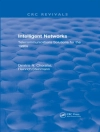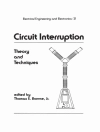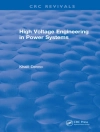This book contains selected papers presented during the World Renewable Energy Network’s biannual World Med Green Forum (MGF). The 2022 MGF highlights the role of renewable energy applications in the sustainable building sector with a focus on the Mediterranean region as a foundation for a truly positive energy future. MGF is an open roundtable for an international community of researchers, practitioners, and experts to discuss the most innovative and promising sustainable building technologies. The papers presented explore the intersection between twin transitions in policies, programs, projects, and experimentation, with the digital domain innovating the green building sector towards more reliable and inclusive planning and design practices in order to collectively envision future buildings and cities.
Jadual kandungan
Part 1: Cities: Healthy, Augmented and Resilient Cities.- Chapter 1. Towards Sustainable Regeneration in Central Urban Areas.- Chapter 2. Urban regeneration processes of public housing in the Mediterranean area: a multiscale and multi-system approach.- Chapter 3. Energy Communities and Smart Villages in the Madonie Sicilian inner rural area.- Chapter 4. Environmental data-driven design for the management of climate-adaptive environmental design processes of the built environment.- Chapter 5. Energy, resource circularity and retrofitting in Positive Energy Districts.- Chapter 6. An urban infrastructure as quality city connector in a multystakeholder approach.- Chapter 7. Urban green infrastructure for planning neutral communities. Processes and technologies to assess the effects on the territories.- Chapter 8. Building a healthier living environment for people and the planet. A case study review.- Chapter 9. Learning from Small Green Spaces. How Findings on Use and Perception can improve the Designing of Urban Experience.- Chapter 10. New Regeneration Scenarios to Improve the Livability in Villages.- Chapter 11. Agile-Transdisciplinary Conceptual Framework for Retrofitting Mediterranean Built Environments.- Part 2: Buildings: Sustainable, Retrofitted and Renovated Buildings.- Chapter 12. Impact of Process Steps on the Performance of Heterojunction Solar Cells.- Chapter 13. Active and Passive Energy Efficiency Systems Compatible with Traditional Buildings in Palestine.- Chapter 14. Proposal of a multiscalar assessment framework to guide renovation actions towards a more resilient built environment.- Chapter 15. Integrating different PV roofs on a heritage building considering aesthetic, technical, energy and environmental aspects: a multi-perspective approach.- Chapter 16. Experimental tests for the adaptation of a curtain wall subjected to extreme events in the Mediterranean Area.- Chapter 17. Seismic Evaluation of a Curtain Wall System for improving the adaptive performance of connecting non-structural components.- Chapter 18. Process Management of Spatial Structures to Address Positive Buildings with the Goals of Sustainable Development.- Chapter 19. Assessing environmental performance and climate change mitigation effects of bio-based materials for building retrofitting.- Chapter 20. Solar Architecture in Rome: The refurbishment of historic buildings with active solar technologies.- Chapter 21. Integration of solar technologies in historical buildings: construction of an evolutionary framework of good practices.- Chapter 22. Blow-up-Sustainable Modular Houses for Slum Dwellers amidst Covid-19.- Part 3: Technologies: Circular and Ecological Materials, Nature-based Solutions for the Built Habitat.- Chapter 23. Low-cost procedure for evaluating the thermal resistance of building materials.- Chapter 24. Global Catastrophe – Climate Change is happening now, Renewable Energy can reduce its impact.- Chapter 25. Use of vegetable materials fortemporary structures and infrastructures: Sustainable design with tensile systems: case study in Guimaraes.- Chapter 26. Green and healthy solutions in post-pandemic housing.- Chapter 27. Integration of Circular and green technologies for the adaptive reuse of public space.- Chapter 28. Transitional spaces as a domain for public-private engagement in urban regeneration.- Chapter 29. Marine Energy Sources for decarbonization of Mediterranean regions through Maritime Spatial Planning.- Part 4: Humans: Environmental Comfort and Well-being, Energy Efficiency and Users’ Conscious Behaviour.- Chapter 30. Evaluation of electrical performance for 1.4 k W Photovoltaic system in Oman: a technical and economic study.- Chapter 31. Rethinking the European Green Deal – Accelerating the transformation towards energy independence based on 100% Renewable Energy.- Chapter 32. Prospects for Wind Energy in Southern Morocco and Northern Mauritania.- Chapter 33. Co-design inclusive relations between Humansand environments adopting a citizen science approach.- Chapter 34. The Influence of Individual Comfort in Shaping the Tourism Image of Balige.- Chapter 35. Feasibility of integrating small scale anaerobic digestion in urban areas: Analyzing energy efficiency.- Chapter 36. Dried-fruit shell reuse in green construction and building materials.- Chapter 37. Functional hospitals for humans.- Part 5: Processes: Methods, Policies and Education for Inclusive Co-planning and Co-design.- Chapter 38. Artificial Cellulose Type Catalysts for Depolymerisation of Cellulosic Biomass.- Chapter 39. Learning from collaborative processes to design the urban green transition.- Chapter 40. Influence of optical characteristics of façades on pedestrian thermal comfort within the streets of Manhattan.- Chapter 41. Sustainable real estate development. How to measure the level of introduced sustainability?.- Chapter 42. Strategies for Frugal Smart Oasis:Figuig as prospect.- Chapter 43. A simulation-based approach for defining energy retrofit strategies of built heritage, through the use of H-BIM tools.- Chapter 44. Generative Environmental Design tools to support circular economy at the local scale.- Chapter 45. An integrated approach for energy and environmental improvement of built heritage through Building Information Modelling (BIM).- Chapter 46. Investigation on the chance of applying bioclimatic solutions for ancient architectures’ regeneration.- Chapter 47. Satellite imagery and AI techniques in geospatial analysis to enhance environmental sustainability Application on urban green space in the city of Rabat Morocco.- Chapter 48. Living Lab for Technological Retrofit Design on Perceived Quality.- Part 6: Late arrival Papers.- Chapter 49. Retrofitting of an Existing Building to be a Sustainable, Vibrant, and Smart Building.- Chapter 50. Co-design eco-sustainable and innovative retrofit scenarios in the university context: the experience of be XLab.- Chapter 51. Building digital scenarios to predict energy efficient renovations: the experience of be XLab.- Chapter 52. Leachability of spent chromated copper arsenate (CCA) treated wood encapsulated in geopolymer cement.- Chapter 53. Behind a Senseable Green Building The new Sistema Ambiente Headquarter.
Mengenai Pengarang
Dr. Ali Sayigh is Chairman and Founder of the World Renewable Energy Congress and Council; Director General of the World Renewable Energy Network (WREN); Chairman and Founder of the Arab Solar Energy Society; and Past Chairman of the UK Solar Energy Society. Dr. Sayigh actively consults on renewable and sustainable energy issues for a number of international organizations, including UNESCO, ISESCO, UNDP, ESCWA, & UNIDO. Dr. Sayigh was Director of Solar Seminars at ICTP Trieste, Italy from 1977-1995; Professor of Solar Energy at King Saud, Kuwait, and Reading Universities from 1969 to 1994, and Professor of Engineering at the University of Hertfordshire from 1994 to 2004. He was the founding expert in Renewable Energy at AOPEC. He is a Fellow of the Institute of Energy, a Fellow of the Institution of Engineering and Technology (IET), a Fellow of the Royal Society of Arts, and a Chartered Engineer. He has published more than 400 papers and has contributed to and edited more than 30 books. He has been Editor and Editor-in-Chief of several international journals, including Renewable Energy and the International Journal of Environmental Sciences and Technology and Editor-in-Chief of the reference work Comprehensive Renewable Energy.












